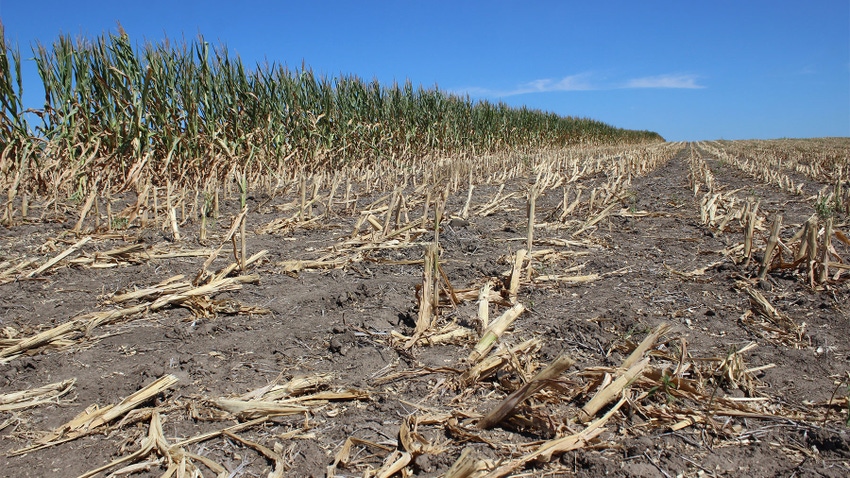August 1, 2023

Many Missouri corn growers are unsure about when to greenchop or ensile their drought-stressed crops.
Kelly Nelson, University of Missouri Extension state agronomy specialist, outlines six key points to take into consideration before heading to the cornfield:
1. Estimate yield. Evaluate pollination and do a yield estimation on the field based on current pollination. This could be helpful to the farmer when it gets close to harvesting the crop for silage. There are several yield estimation calculators available for corn. Count the ears (the number in 17.5 feet of row), the number of rows of pollinated corn on the cob and the number of kernels that are pollinated in the row. Multiply these together and divide by 90. This will provide an estimated yield of the pollinated corn in the field, assuming it fills out throughout the rest of the season.
2. Determine value. Count if there is “tip back.” If there is pollination of the ear, kernels are typically lost at the tip of the ear first, called tip back, caused by abortion. Precipitation can help fill out kernels that are present, but once the kernel is aborted, precipitation won’t help fill out that seed. Evaluate the number of kernels per ear, even if there is tip back, to get an estimated grain yield. This helps make an informed decision on the value of the silage vs. value of the grain harvested.
3. Consider stalk nitrates. With droughty corn, you can get high stalk nitrate levels. Nitrate toxicity is a concern in drought conditions. This will affect the height at which the corn is chopped.
4. Check moisture. Use guidelines on corn moisture levels for chopping for silage. According to a University of Wisconsin guide to harvest timing, silage harvest usually begins about 50% kernel milk, which is about 42 to 47 days after silking, so silking must occur by Aug. 15-20 to mature before typical killing frost dates, but remember the timing of silage harvest depends on achieving the proper moisture for the storage structure.
5. Be aware of aflatoxin issues. The presence of aflatoxin could affect the price farmers receive at the grain elevator. This can’t be determined yet, but it can be a factor.
6. Consider crop insurance. Communicating with your crop insurance adjuster is important, so you know what you need to leave in the field to allow the adjuster to evaluate yield.
Make the choice
Justin Calhoun, MU Extension soil and cropping systems specialist, often says a farmer’s biggest question is when to chop.
“It’s a judgment call on what yield potential is on a particular field,” he says. “If growers have a historically high-yielding field and booked some corn at high prices, they can still turn a profit on roughly 20% loss and might consider keeping the corn for grain. But if lower yields are already expected, it might be in the grower’s best interests to consider pulling the plug.”
If you don’t need it for livestock feed, Calhoun adds that letting what little dryland corn you have keep going in drought is often the best choice because the only other option is to bury it.
Source: University of Missouri Extension
Read more about:
DroughtYou May Also Like




